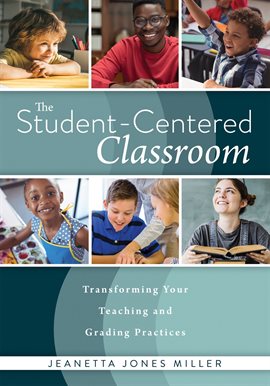Excel Classmr. Becker's Classroom
Excel Summer Enrichment Class The Armada Excel program offers students the ability to get a head start on the upcoming year through skill development. Students will work on their required Summer Reading Projects during this time; full completion of the Excel class will replace the requirement of the independent project.
View the Virtual Classroom Schedule A blend of pre-recorded lectures and live CPA online classes led by instructors who discuss the most frequently missed questions in Wiley CPAexcel. Students have the opportunity to ask questions of live instructors and access archived lectures. View Vy Nguyen’s profile on LinkedIn, the world’s largest professional community. Vy has 2 jobs listed on their profile. See the complete profile on LinkedIn and discover Vy’s connections.
Learning Targets
I can explain how authors use textual evidencewithin fictional characters to make them more believable and real.

We will be able to gather textual evidence to explore controversial ideas and then successfully defend different viewpoints.
Common Core State Standards

W.9.1 Write arguments to support claims in an analysis of substantive topics or texts, using valid reasoning and relevant and sufficient evidence.
a. Introduce precise claim(s), distinguish the claim(s) from alternate or opposing claims, and create an organization that establishes clear relationships among claim(s), counterclaims, reasons, and evidence.

b. Develop claim(s) and counterclaims fairly, supplying evidence for each while pointing out the strengths and limitations of both in a manner that anticipates the audience’s knowledge level and concerns.
c. Use words, phrases, and clauses to link the major sections of the text, create cohesion, and clarify the relationships between claim(s) and reasons, between reasons and evidence, and between claim(s) and counterclaims.

d. Establish and maintain a formal style and objective tone while attending to the norms and conventions of the discipline in which they are writing.
e. Provide a concluding statement or section that follows from and supports the argument presented.
W.9.9 Draw evidence from literary or informational texts to support analysis, reflection, and research.
a. Apply grades 9–10 Reading standards to literature (e.g., “Analyze how an author draws on and transforms source material in a specific work [e.g., how Shakespeare treats a theme or topic from Ovid or the Bible or how a later author draws on a play by Shakespeare]”).
b. Apply grades 9–10 Reading standards to literary nonfiction (e.g., “Delineate and evaluate the argument and specific claims in a text, assessing whether the reasoning is valid and the evidence is relevant and sufficient; identify false statements and fallacious reasoning”).
SL.9.3.Evaluate a speaker’s point of view, reasoning, and use of evidence and rhetoric, identifying any fallacious reasoning or exaggerated or distorted evidence.
üQuestioningand discussion techniques:
üEngagingStudents learning
üDemonstratingflexibility and responsiveness
üCommunicating withstudents
ü Instruction and Assessment: Domain 3: Standards 3, 4, 6
Excel Classmr. Becker's Classroom
Time/min | Deliverability | Instructional Strategy |
Day 1 | Tuesday | |
0-5 | anticipatory set | Calvin and Hobbs |
5-15 | Visual prompt | Journal:Two contrasting images:What do you notice about these two images. |
15-20 | Discuss prompt | |
20-30 | Art comparison | |
15-25 | Plan B:Story about the unsolvable problem.Heinz's dilemma | |
25-30 | Vote | Hand out voting paper.Have students vote.Is the husband justified in breaking the law to save his wife's life? |
30-40 | Guided instruction | Explain Double Entry notes to the students.They will journal while we read. |
Guided discussion | Discuss argument for the remainder of class | |
Acc. English | Split class into opposing Argument groups HW. Read part I 'The Most Dangerous Game.' Take two column notes. | |
Day 2 | Wednesday | |
0-5 | Journal | Prompt: Is it within your power to decide if rules can be broken?Should rules remain concrete? |
5-15 | Teacher lead | Introduce The Most Dangerous Game.Brief summary of characters.Remind students of the word exercises in Charge of the Light Brigade.Background on Characterization of Rainsford |
15-30 | Image Comparison | Have two images prepared for analysis, one to represent Rainsford and the other to represent what Gen. Zaroff may have been like. Show the first and have students openly describe what they see Show the second and have them compare the two Discussion about the characters in The Most Dangerous Game' using the differences in the images as examples. |
15-20 | English 9: Guided instruction Activity Observation Assessment | Review Argument process from 'The Charge.' The Argument Debate Sides |
20-30 | English 9: Guided instruction | Read up through paragraph 84: In double entry notes, have students record: |
30-40 | English 9: Independent work | Studentscollaborate with each other and share their reasons for the notes they took |
30-40 | Acc. English | Activity: Small debate |
Day 3 | Thursday | |
0-10 | Teacher lead Class Discussion.PowerPoint slide | No bell activity.Discuss the questions generated by each side of the argument. The students will look for evidence that support Rainsford is justified in being completely against killing another human being. Students will look for evidence that Zaroff is justified in hunting human beings |
10-20 | Guided instruction | Back story: Characterization of General Zaroff's (back story), connect it to the Charge of the Light Brigade. Have students take notes about Zaroff's background |
20-30 | Independent reading | Read through paragraph 167 as a class: Remind students about double entry notes requirements: |
30-40 | Small Groups Observation Assessment | Studentscollaborate with each other and share their reasons for the notes they took. |
Day 4 | Friday | |
Maybe add a day and insert an activity | ||
0-10 | Guided instruction.Prezi | No bell activity.Discuss the questions generated by each side of the argument. |
10-25 | Student read | Finish Story:Remind students about double entry notes requirements: |
25-40 | Teacher lead | Classroom discussion about the story. |
Day 5 | Friday | |
Individual Work | Assessment: Through their own perspective, students will write a well organized paragraph taking a stand on one side or the other, using evidence from The Most Dangerous Game to support their argument. |
Excel Classmr. Becker's Classroom Practice
